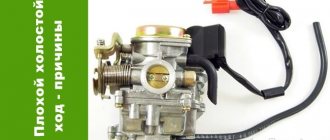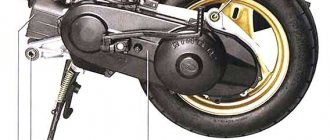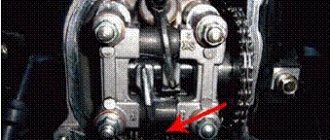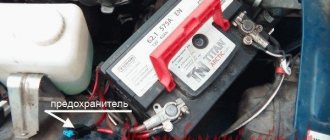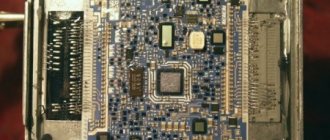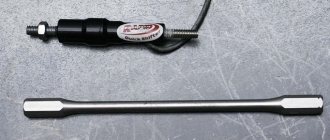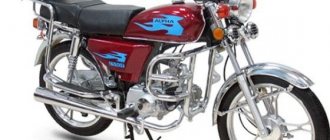The normal operation of a scooter at idle speed depends on many factors, including the condition of the piston, spark plug, carburetor, air filter, muffler, switch, hall sensor, etc.
To know for sure the reason for the unstable idle of your scooter, you need to carry out a series of operations to identify the breakdown and make solutions to fix the problem.
Let's start checking. Adjust the idle speed of your scooter and watch what happens next. Let's look at three possible developments point by point.
Scooter engine runs at high speeds
Even after tuning, the scooter engine runs at high speeds . First, you need to make sure that your scooter's throttle is completely closed to prevent throttling. If the throttle is not completely closed, you need to check the adjustment of the throttle control cable (throttle) and adjust the cable properly.
However, if the damper is closed, and the speed is still high and cannot be adjusted, you need to check the idle jet in the carburetor to ensure it corresponds to the required markings, namely, the required diameter for a specific scooter model.
In most cases, the candle is to blame
Yes, yes, most often the answer to the question of why the scooter does not gain momentum and stalls is the spark plug.
As a result of using low-quality fuel, the gap between the electrodes of the spark plug is filled with carbon deposits. Because of this, spark formation deteriorates, or it cannot form at all. In some cases, too small a distance between the electrodes leads to the formation of a short circuit between them.
In order to get rid of problems, it is necessary to periodically remove carbon from the spark plugs, and also use a feeler gauge to check the size of the gap between the electrodes. For two-stroke engines, the gap is 0.6 to 0.7 mm.
Owners of motorcycles in Kyiv, who often purchase scooters through the website https://dvako.com.ua/, have learned to clean the spark plug without removing it from the cylinder, simply periodically increasing the engine speed to the maximum. You can also file down the side electrode (its end should only reach the middle of the central contact) without changing the distance between the electrodes. This approach allows the spark plug to operate more stably even when carbon deposits form. But you should not remove part of the electrode if almost no carbon deposits are formed.
How to check the hall sensor on a scooter: photo and video instructions
Scooter inductive sensor
The hall sensor (HS) has become widespread in the automotive industry, because thanks to this controller it was possible to solve several problems at once. Hall sensors are now also installed on 2-wheeled vehicles such as scooters.
Dx scooter
You should know that the scooter DH is a device equipped with a magnet. By interacting with it, the DC sends an impulse to the vehicle switch, which, in turn, affects other elements of the ignition system (babin, etc.).
Why does my scooter stall at idle?
Good afternoon, I got a qingqi qm50qt - 5n scooter with a Suzuki engine (75 cc), there are some problems: 1st It doesn’t start with the button, only with the kick it’s very difficult, you have to pull for about 15 minutes and the spark plug fills. After warming up, it starts normally, but again not with the button (the battery is fully charged). The 2nd engine stalls at idle, and when it is just started and the scooter is not yet warmed up, it still holds on, but after driving and stopping, it immediately stalls.
The carburetor was cleaned. and in general for some reason there is only one regulator on it (I don’t know why, since I’m not good with mopeds)
The quality screw and XX stroke need to be adjusted... I had something similar. Doesn't start with the button - does it turn the engine? If it turns quickly and does not start, the compression sign is
I was repairing one Suzuki AP, there was also the same problem, your electronic enrichment valve was simply closed and on that carb there was also no screw for adjusting the mixture quality, but only an idle speed adjustment screw. The idle speed needs to be adjusted on a well-warmed engine. And so that it started easily, you need to change the valve or when you start it, cover the air supply with your hand, I did this right on the air filter and then it starts right away, but you need to warm up the engine a little more, otherwise when you remove your hand it will stall again. Or you just have a crap piston and you have no compression.
Autovitaliy
, not necessarily a starting enricher, but it’s worth checking it, especially since it’s very easy. The reed valve may be damaged and the worst option is dead crankshaft seals. As I understand it, the engine is two-stroke or am I mistaken. If it’s a two-stroke, then my recommendations are correct.
Yes, the engine is two stroke. Thank you all for the advice, as soon as I figure out what’s funny I’ll be sure to write back
kiddie
, post a photo of the engine, it’s interesting to see (at least a couple so that you can look at it from different angles)
ok, I'll take a photo tomorrow and post it
Mine also bothers me, then the idle is crazy, I turn the screw a little and it’s fine, over time it starts to stall at idle, I tighten the screw so that I keep the idle for a minimum, over time they become crazy and so on. WTF? I actually drove 800 km after the overhaul, maybe I haven’t run it in yet?
Maybe it hasn’t been broken in yet, I’ve had the same stall until 500 km from birth.
You can look at the rings, but it's hard to take them apart
Well, yes, it’s true that my throttle cable has already torn in the handle twice, I molded it as best I could, now it’s constantly under tension, maybe it’s getting snagged? And the gasket on the carburetor cap where the needle is inserted is all chewed up.
Small and inexpensive
Currently, the foreign diving press is actively advertising a Sea-Doo towing vehicle called the VS Supercharger.
The manufacturer claims that this is the cheapest towing vehicle available on the market, and indeed, the price stated on the company website, $399 dollars, is very attractive. After all, the cost of most towing vehicles exceeds $1,000, and the price of serious technical models can go beyond $5,000. The Seascooter is also the most compact towing vehicle, weighing only 8.4 kg including battery. Developing a speed of up to 4.8 km/h, the Seascooter can tow a diver (or “snorkeler”, that is, someone who swims on the surface with a mask and snorkel) for 1.5 hours.
The only limitation of the Seascooter is the 30-meter depth limit. However, given its entertainment purpose, then what is the point of going deeper? Corals and fish are brightest at shallow depths.
If you accidentally let go of the Seascooter, its engine will immediately stop and the tow will slowly float to the surface, making it easy for you to catch up and resume your fantastic flight.
From a design point of view, the Tyger Ray is notable for the fact that its propeller is located in the front part, that is, as far as possible from the diver. So divers with long hair don't have to worry about their hair being pulled under the propeller. In addition, this towing device directs the water flow from the propeller to bypass the diver's body, which likely increases its efficiency.
The speed of movement and duration of work of the Tyger Ray is somewhat less than that of the Seascooter, but its working depth is greater, up to 38 meters.
Golden mean
One of the most popular developments on the towing market belongs to Apollo. At first glance, the characteristics of the Apollo AV-1 do not stand out in any way: speed up to 3.8 km/h, operating time from 45 to 60 minutes. True, the working depth is greater, up to 50 meters. Why then such a high price - about 2000 dollars.
And the difference between expensive and cheap towing vehicles is about the same as between a foreign car and a Zhiguli. The AV-1 has additional convenience and safety features. There are three different speeds, so you can control the pace of your movement. There is a temperature sensor that prevents the engine and battery from overheating, and if water gets inside, the towing vehicle will turn off instantly. If something foreign gets under the propeller grille, a special clutch will work and the propeller will not harm you.
There is a special saddle for this towing vehicle, using which you can move through the water with minimal resistance.
Finally, it is also important that the AV-1 has been in production for more than 15 years. Hence its high reliability and excellent reputation.
The tug, produced by Dacor under the name Seasprint, is completely similar to the Apollo AV-1.
But the low battery indicator is certainly a useful device. Mako also has a protective clutch in case foreign objects get under the propeller, and a saddle for riding. It allows you to reach a speed of 4.3 km/h and move at this speed for 40 minutes. Well, if you are satisfied with a lower speed, the towing vehicle can work for up to 2 hours. It is quite possible to swim up to 5 km on one battery charge with the help of Mako. The maximum depth for this towing vehicle is 50 meters, and it costs about $2500.
Finally, one more original development cannot be mentioned. This device is called Aquanaut SPU, it allows you to turn into an “underwater Carlson”. The device attaches to the bottom of the tank, its weight allows you to do without a weight belt or reduce the amount of weight, and best of all, it leaves your hands free so you can hold a camera or video camera while cutting through the ocean.
Aquanaut has two speeds. If you're moving fast (up to 4.8 km/h), the batteries last for 30 minutes, and at low speed you can swim this way for up to 70 minutes. Using your body as a rudder, you can achieve amazing maneuverability with this tow, and it takes 2 to 6 hours to charge, meaning it's quite possible to charge the batteries during the surface interval between two dives.
Considering that the working depth of the Aquanaut SPU reaches 100 meters, and it costs from $1000 to $1400, this towing vehicle can be a profitable purchase. Aquadyn calls its brainchild a revolutionary achievement in the field of DPV design and, perhaps, it is so.
Cleaning and adjusting the carburetor
If you don't know why the scooter stalls when you give it gas, first check and adjust the carburetor. If it was often removed and adjusted, it may be that somewhere it began to leak air. If such a problem occurs, you can use a sealant or buy gaskets for the carburetor.
Let’s say the scooter stalls, you don’t know what to do. Then the first thing we do is clean the carburetor. Mostly the jets and auxiliary systems become clogged with dirt, so after cleaning the carburetor and adjusting all the jets, you can try to start the scooter again and give it gas. If the problem is not solved, move on to the main action - adjusting the needle to adjust the quality of the mixture. The needle in the carburetor performs the main task - adjusting the amount of fuel that is then supplied to the combustion chamber. Basically, you can adjust the quality of the mixture using a special jet on the carburetor, but if working with it does not produce results, you will have to manipulate the needle.
The needle is in close contact with the throttle handle, so when the handle is opened, the needle rises up and allows fuel to be supplied. That is, the higher the needle is raised, the more gasoline flows in and the power increases. Power guarantees better speed and traction. If you disassembled the carburetor, taking out the needle you will see 5 grooves on it, one of which has a retaining ring installed. Typically, such a ring is located in the center, that is, on the 3rd groove. If you lift the locking ring up, the needle will drop lower. This allows a leaner mixture to be supplied to the evaporation system, in which more air is supplied than gasoline. When installing the ring on the 4th and 5th grooves, the mixture becomes richer, where more gasoline is supplied than air.
Be careful that if you put the ring up or down as much as possible, this will not give the best result; the adjustment must be done gradually. Otherwise, the scooter will overheat, there will be a loss of power, and our main problem is that the scooter will stall when you press the gas handle. To find out the quality of the mixture, check the spark plug; its color will indicate whether the mixture is rich or lean.
Please note that there may also be other reasons why the scooter stalls when applying gas. Above we indicated the main ones; for some, the scooter stalls due to improper operation of the generator. Try, adjust, and share your problems and how to solve them.
Video
Stalls at idle
_________________ Driving KYMCO through KYMCO, sees KYMCO in the river KYMCO put KYMCO in the river KYMCO KYMCO KYMCO KYMCO (c)
. cold is cold, and WARM POOP is on schedule! (With)
In the Lefortovo tunnel, all fifty dollars are worth a hundred. (With)
I apologize, I looked on the Internet what an enrichment agent is. I don’t know what condition it is in, but judging by the description, it looks like the first described case of “the position of the extended needle.”
“Which should make you wonder if your starter enricher is faulty. Let's look at the main reasons: The scooter is difficult to start in the morning; The scooter is difficult to start after parking; The scooter consumes an excessive amount of gasoline; The scooter does not idle; After warming up it works normally, but when cold it works with significant interruptions.”
“The enrichment malfunction also has two positions, this is when the solenoid valve is constantly in the extended needle position (1) or in the initial position of a cold engine - that is, when the needle is constantly retracted (2). Both cases have completely different consequences for engine performance. In the first case, the scooter does not start when cold, several kick movements do not produce results, and the scooter does not start with the wiper. In the second case, the scooter starts up normally, but consumes a lot of gasoline and constantly operates in a rich mixture mode, with consequences arising from this.”
How to stabilize floating speed
- Penetration of foreign air into the engine. It is necessary to check the tightness of the air system channels with the intake manifold. For such purposes, it is necessary to dismantle each hose separately and pump it with a pump or compressor, but you can try spraying liquid -40 on the hoses, where it will quickly evaporate; there is most likely a crack in the hose. In such a situation, it is better to replace the damaged hose with a new one rather than wrap it with electrical tape.
- Replacement of IAC. The condition of this device is checked with a conventional multimeter, which needs to check its resistance. If the resistance readings are in the range of 40-80 Ohms, the regulator is faulty and such a device requires immediate replacement.
- Cleaning the valve and elements of the engine ventilation system. In this case, you will have to disassemble the oil sump and get to the ventilation valve. It should be pulled out and washed in a product for cleaning engine elements from an oil film. You can use regular kerosene. Next, dry the valve thoroughly and then put it in its place.
- Replacing the air flow sensor. This is the most delicate part and most often cannot be repaired. Therefore, if the cause is the air flow sensor, then it is advisable to replace it. It is known from practice that even professionals cannot repair a hot-wire anemometer.
- Flushing the throttle valve and then installing it in the correct position. There are two methods for cleaning the throttle valve from oil contaminants: without removing it from the car, and also with removing the throttle valve. When removing the damper from the car, you must disconnect all wires and hoses from the damper, loosen it and pull it out. Next, place it in a container and fill it with cleaning aerosol. If the oil stains on the surface of the throttle valve are already old, you can clean them with a brush. Next, dry the damper surfaces with a rag and put them in place, connecting all the wires and hoses. If the damper is not removed from the car, then it can be washed on a hot power unit with a similar aerosol. Before spraying cleaning agent, disconnect power from the throttle valve. First you need to pour the product inside the throttle valve, wait a few minutes and start the engine. With the power unit operating, continue cleaning the damper with the same product. If, during such cleaning, white smoke comes from the damper, then this is normal, since oil contaminants are cleaned in this way. At the end of the work, you should connect the wires and adjust the operating order of the throttle valve on the computer, setting the required opening gap.
- Idle speed adjustment. This procedure can be carried out using a regular screwdriver, adjusting the screws for the quality of the fuel mixture and the number of engine revolutions.
- Replacing the solenoid valve. If the carburetor idle valve malfunctions, the engine can only operate when the choke handle is pulled out. Therefore, in order to prevent idle speed fluctuations, it is advisable to replace the valve with a known good one or a new one.
- Cleaning the idle air jet. Even in the old days, cleaning the jet from oil deposits was considered a very labor-intensive task. Currently there is no need to remove the jet from the carburetor. To do this, you just need to pour a specialized product into it, designed for cleaning carburetors, and wait in this state for several minutes. Then you need to clean the nozzle from dirt using compressed air.
- Treatment of parts of the fuel pump on a diesel engine from rust. To perform this task, you will need a specialized corrosion cleaning agent. This can be either an imported or a domestic product. It is simply sprayed into the fuel tank by opening its neck before refueling with diesel fuel at a gas station. The cleaning agent will clean the pump parts from rust on its own. In order to prevent similar corrosion of the high-pressure pump in the future, it is recommended to pour a glass of motor oil into the tank, which can form a protective film on the surface of the pump parts when moving.
You need to know that if uneven engine speed occurs at idle, you must immediately contact a service station and carry out detailed diagnostics of the operation of all engine systems. Timely detection of faults will protect you from costly repairs.
Diagnostics
Checking the power plant is done in this way.
Fastenings
Check that all bolts are in place and that they are tightened. Sagging cushions and loose axles in 60% of cases provoke the transfer of vibration to the body, imbalance of the internal combustion engine.
Fuel system
Checking the fuel lines is necessary to eliminate air leaks. Leaked bubbles are the primary source of interruptions in the normal engine stroke. For example, on a VAZ 2110 the “sore” is located in the fastenings of the fine fuel filter. It is also necessary to diagnose the carburetor or injector. A grain of sand stuck in an injector or jet prevents the normal flow of gasoline and disrupts the operation of the installation.
Electrics
The most common category of diseases is found in the electrical circuits of the machine. Here the master is required to consistently study the entire structure, from spark plugs to the ignition coil. On the injector you need to look at the ECM and then the ECU.
It is also important to measure the fuel rail pressure for the injector.
